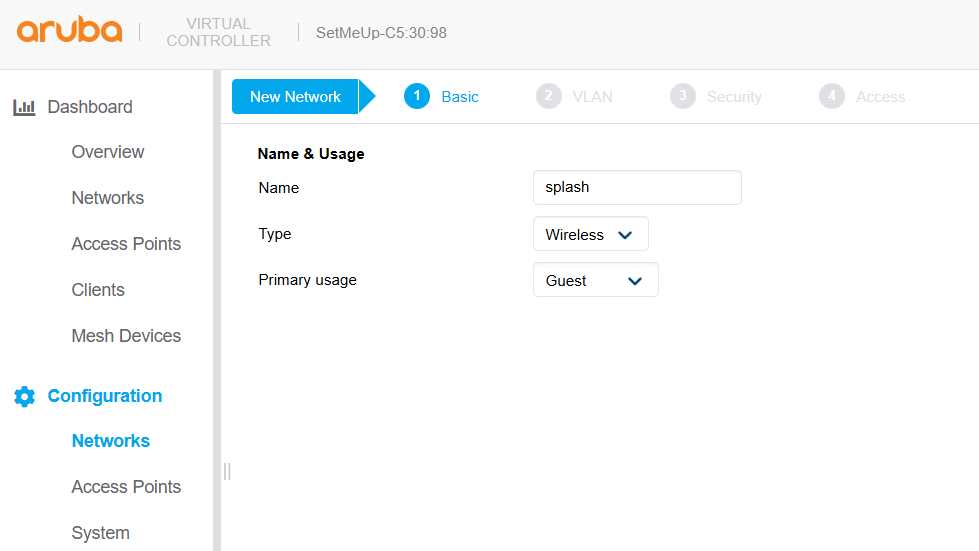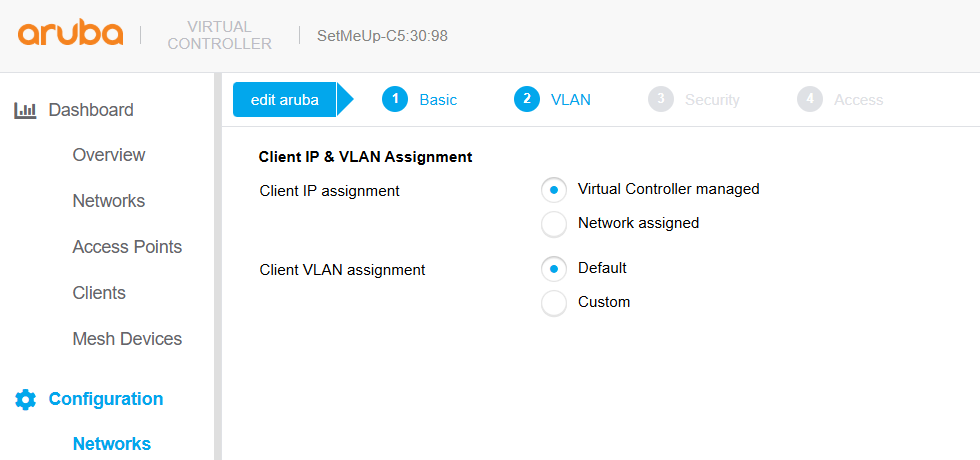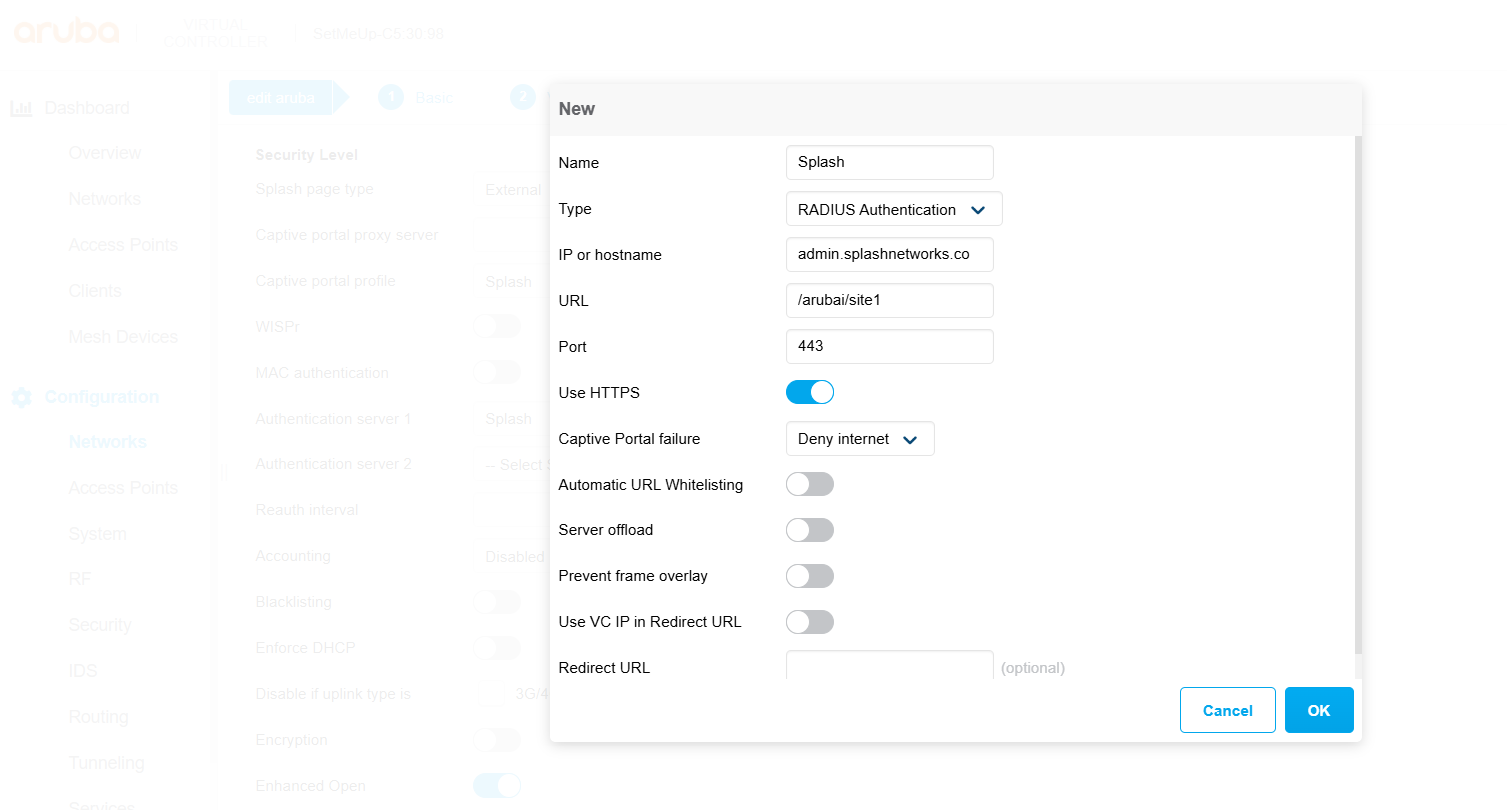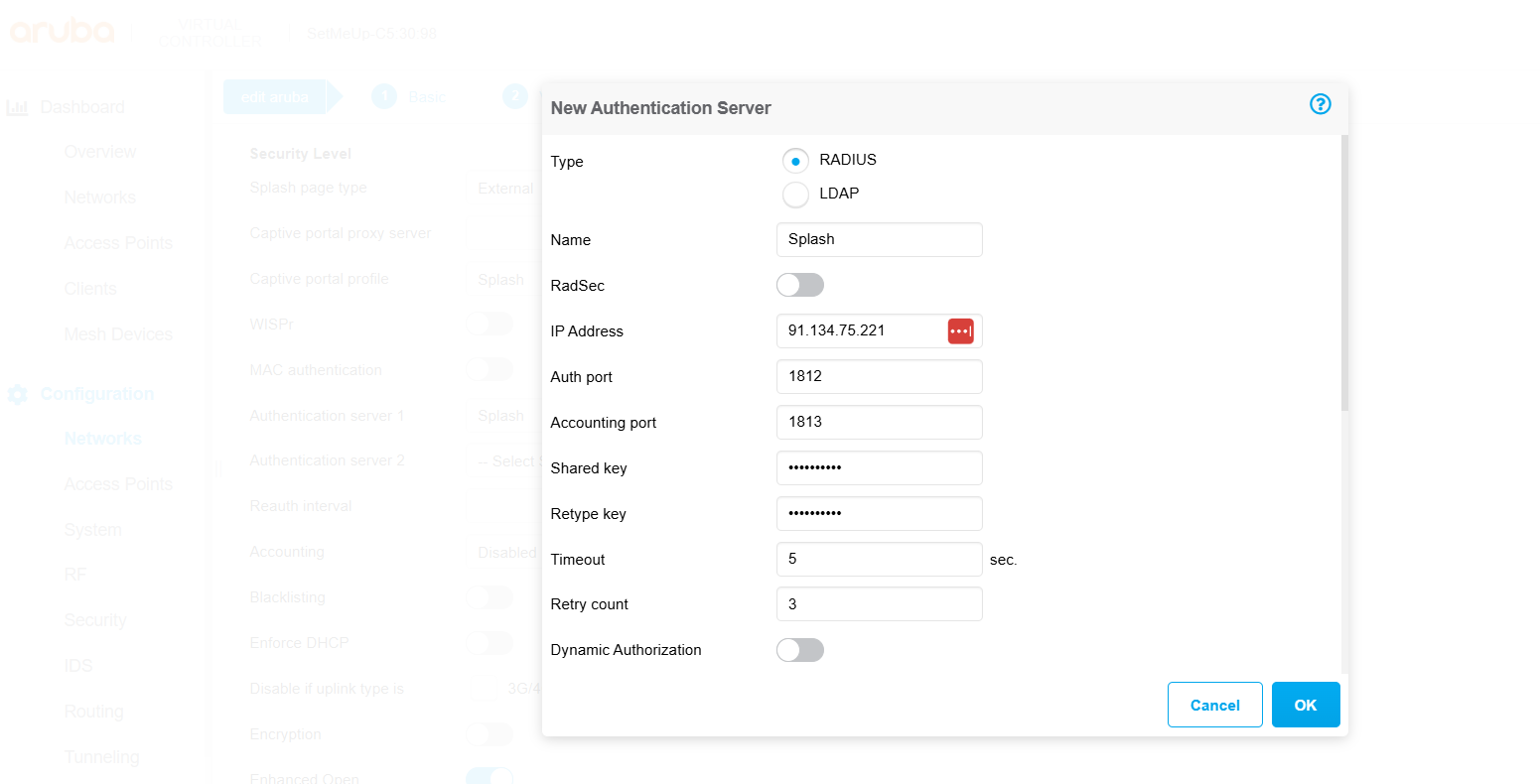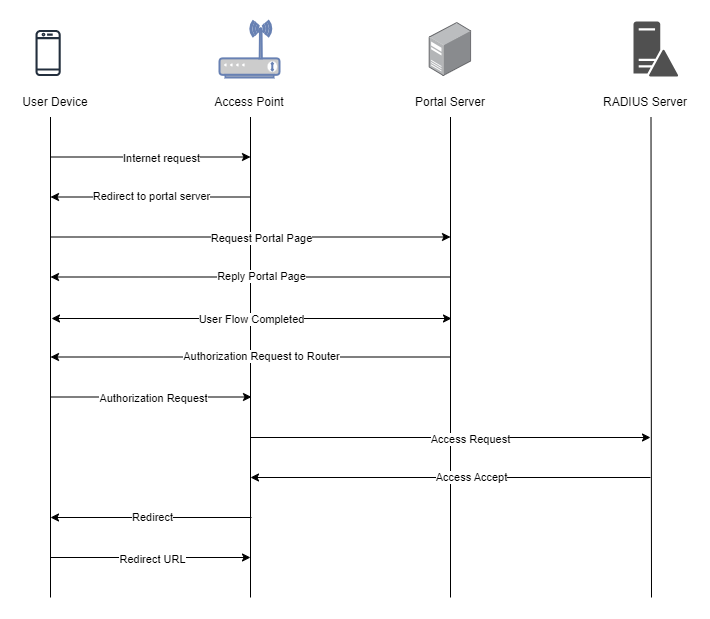Aruba/HPE
To set up a portal for Aruba/HPE first you need to create a template.
Add a Portal
To create a portal go to the Portals tab and click on the New portal button. Enter a name for the portal, and in Hardware select Aruba. Then, enter a Site ID based on which the path of the portal URL will be defined.
The Guest Portal URL will be created based on the URL of the Splash Air application followed by the path given by Site ID. Note this URL as it will be required later.
Select the venue and template and click on the Create button.
Portal Settings
You can go to Portals to view the settings for the portal(s) just added.
Clicking on a portal takes you to the details for that portal. It lets you specify additional settings:
Business Name: name of the venue which will be displayed on top of the portal
Expiry (days): the time in days after which a repeat user will have to enter their data again on the portal
Redirect URL: the URL a user is redirected to after successful portal authorization
Duration (seconds) after email verification: when using "Link" type Flow it is the "Session-Timeout" a user will receive via RADIUS after successful email verification
You can click on the Edit button against each entry to modify it if needed.
Aruba/HPE Settings
Login to your Aruba AP in instant mode via web and go to Configuration > Networks. Select an existing network or create a new network on which you want to apply guest portal. Enter a name for it, and in Primary usage select Guest.
On the Next screen in Client IP assignment select Virtual Controller managed and in Client VLAN assignment select Default.
Click Next to go to the third screen. In Splash page type select External. In Captive portal profile click on the + icon to create a new profile. Enter a name for it and in Type select RADIUS Authentication. The Guest Portal URL noted earlier now needs to be input in the IP or hostname and URL fields in the following way:
Suppose the Guest portal URL is: https://admin.splashnetworks.co/arubai/site1. It will be divided into 2 sections:
-
Hostname:
admin.splashnetworks.co -
URL:
/arubai/site1
Enter these values in IP or hostname and URL fields respectively. In Port enter 443. Toggle Use HTTPS to on.
Click OK to save the profile. In Authentication server 1 click on the + sign. In Type select RADIUS. Enter a name for it, and in IP address and Shared key enter the details of your RADIUS server (will be provided by Splash Networks' team).
Click OK to save RADIUS profile. Keep the other options at default.
Click Next to go to the last screen. In Access Rules Role-based should be selected. In Roles click on the + icon to create a new role. Enter a name for it, such as guest_portal. The default access rule is set to Allow any to all destinations. Edit it and change the Action to Deny. Add a new rule with Destination type to a particular server to allow access to captive portal server. In IP enter the IP of Splash Air server. The remaining options will remain at their default values.
Bring your newly added rule to the top. Toggle Assign pre-authentication role option to On and in the dropdown menu select your newly created profile guest_portal. The final settings should look like this:
Click on Finish to save the settings.
Troubleshooting
To troubleshoot problems it is important to understand the components involved in the captive portal user authorization process and the interactions between them.
Traffic Flow
Here is the traffic flow in the case of Aruba/HPE:

